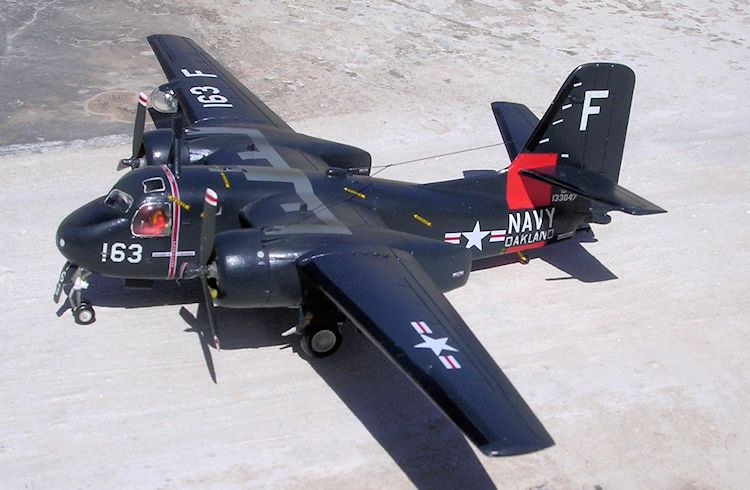
| KIT #: | 04629 |
| PRICE: | $ |
| DECALS: | Two options |
| REVIEWER: | Carmel J. Attard |
| NOTES: | Reboxed Hasegawa kit. Pavla set C72056. |

| HISTORY |
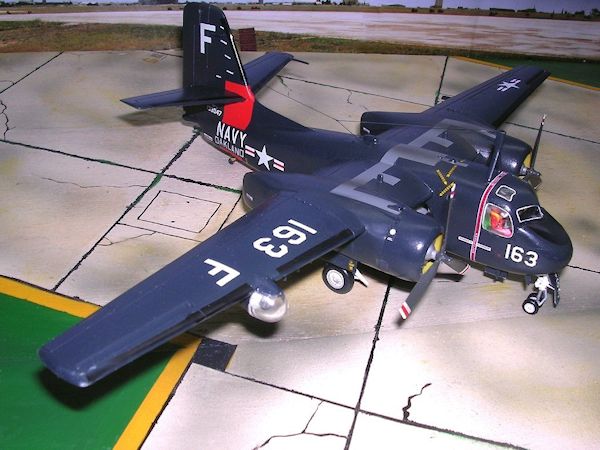
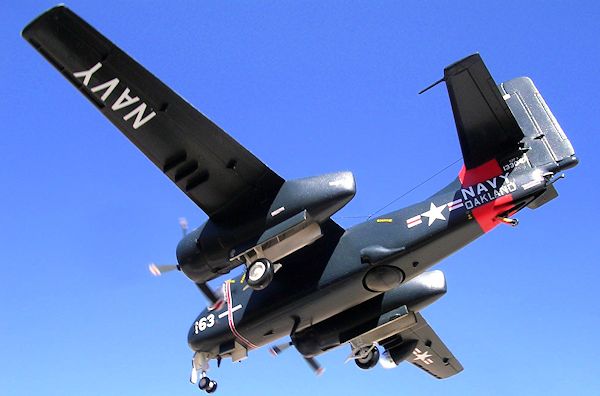
| THE KIT |

| CONSTRUCTION |
The model of the
Tracker I choose to build was one from a Navy reserve squadron which was most
likely a type that originated as one of the early Trackers and may even go back
to 1954 when it was attached to VS-24 and deployed on board the USS Antietnam
when it formed part of the task group in the Mediterranean in January 1955.
Universally known as the Stoof by the US service crew, the kit required some
modifications since it was an early version that differed from the later S2F
that comes in the Revell box.
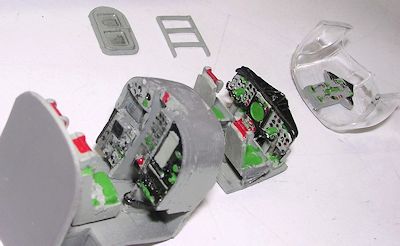 Like all
Tracker models, the powerful searchlight on the leading edge of the starboard
wing that permitted visual acquisition of surface subs at night is retained. A
Pavla models resin detail set greatly enhanced the crew compartment and seating
arrangement for all 4 crew members who are the pilot, co-pilot and two enlisted
sensor operators. These are enclosed in a compartment complete with bulkhead,
Instruments, a door leading to front office, radarscope, and steps to entrance
door as well as the door itself located on the port fuselage side under the
wing.
Like all
Tracker models, the powerful searchlight on the leading edge of the starboard
wing that permitted visual acquisition of surface subs at night is retained. A
Pavla models resin detail set greatly enhanced the crew compartment and seating
arrangement for all 4 crew members who are the pilot, co-pilot and two enlisted
sensor operators. These are enclosed in a compartment complete with bulkhead,
Instruments, a door leading to front office, radarscope, and steps to entrance
door as well as the door itself located on the port fuselage side under the
wing.
The resin detail parts are first cut,
sanded to shape and are all assembled inside the Tracker fuselage after making
certain cuts on the kit fuselage parts around the wing root area in order to
permit fitting of the resin interior parts. Pavla kit instructions clearly
depict the part of the kit needed to remove. The plastic was soft to cut with a
razor saw and after cleaning; all the resin items fitted snugly and filled up
all the interior forward compartments. Interiors were all light grey and the
rest were painted as per Pavla kit instructions. Additional
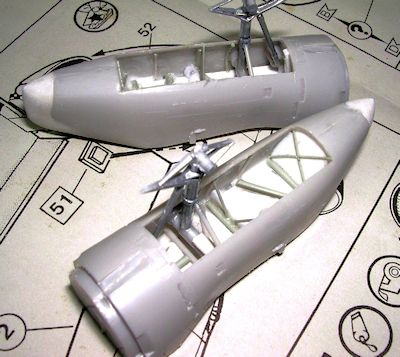 nose weight
was added to any access areas to enable correct sit of the model on the nose
gear.
nose weight
was added to any access areas to enable correct sit of the model on the nose
gear.
The kit also
required the aft portion of the engine nacelles to be modified, as these are
smaller in height and faired into the trailing edge of the wings. The Revell kit
had the parrot’s beak type of nacelle rear and was modified accordingly by first
sawing off the excess part and then rebuild and shape with Plasto filler.
Although it was an early example it had clear panels in the pilot’s overhead
hatch upon studying the photo that I was referring to.
The roof bullet shaped radome was replaced with one of an early design. This consisted essentially of an inverted V shaped antenna with a vertical shorter pole fitted on top. Two semi-loop antennas were also added to tail fin upper and these were made from a thin piece of bent wires. Wireless was also added which stretched at top of fuselage from tail to mid fuselage. The exact length of wireless added was as shown in the reference photo. I noted that these varied from one S2F version to another. Finally detail to wheel wells was added since this area lacked interior structural and leg detail.
| COLORS & MARKINGS |
 Insignia
white Modelmaster brand was used for all wheel wells and leg detail. Some
reference show this as light grey which could well be the case but I have seen
them white after they changed from zinc chromate finish. Anti glare panel on
nose was flat black. The leading edges for de-icing boots were also black.
Propellers were black with red white tip stripes. Other than that the kit was
overall sea blue with an orange ‘reserve’ band at rear of fuselage.
Insignia
white Modelmaster brand was used for all wheel wells and leg detail. Some
reference show this as light grey which could well be the case but I have seen
them white after they changed from zinc chromate finish. Anti glare panel on
nose was flat black. The leading edges for de-icing boots were also black.
Propellers were black with red white tip stripes. Other than that the kit was
overall sea blue with an orange ‘reserve’ band at rear of fuselage.
Most of the
decals came from Blackburn Models.co.uk of Sheffield UK brand. The sheet is
BMD72009 US Navy Blues PT2.These were slightly modified to suite the Tracker I
was representing. Base title legend came from Superscale white letter sheet of
correct size. Grey walkways over the fuselage and wings came from Revell kit
decal. Johnson’s Klear was applied before and after decal application and
finally the kit was given a coat of semi gloss MM lacquer.
| CONCLUSIONS |
Although this Tracker is not the first I have made have yet have added another dimension to my US Navy reserve section. The fascination to these colors could arise in view of the striking contrast that the sea blue makes with the orange reserve band. My reserve fleet now has a Neptune, a Bearcat, Hellcat, and Phantom FH1 and perhaps next time I will further extend the types with a Helldiver and a F9F8 Cougar.
June 2013
Copyright ModelingMadness.com. All rights reserved. No reproduction in any form without express permission from the editor.
If you would like your product reviewed fairly and fairly quickly, please contact the editor or see other details in the Note to Contributors.